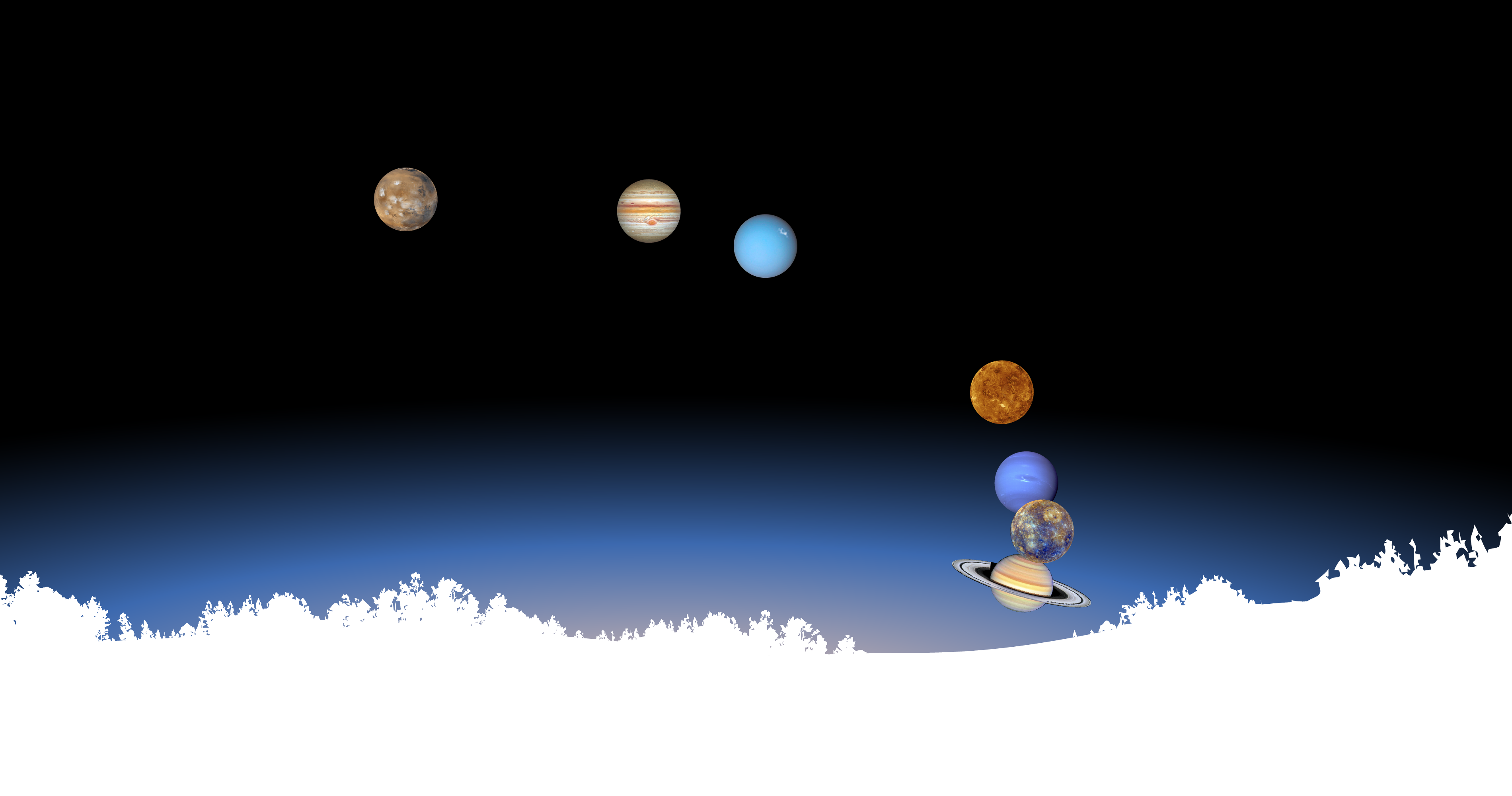
Celestial Spectacle: A Cosmic Gathering of Planets
Intro
This week, stargazers are in for a celestial treat as a remarkable planetary alignment graces our night sky. Seven planets will converge, creating a mesmerizing spectacle that has captivated astronomers and sky enthusiasts alike.
The Planetary Parade
The planetary alignment, also known as a "planet parade," will unfold after dusk on Friday. Seven celestial bodies—Mercury, Mars, Jupiter, Uranus, Neptune, Venus, and Saturn—will align in an enchanting dance across the night sky.
Observing the Show
While all seven planets will be present, not all will be readily visible to the naked eye. Uranus and Neptune, for instance, will require the assistance of high-powered binoculars or a telescope for optimal viewing.
Saturn and Neptune, positioned close to the horizon and the sun, will also pose a challenge to observers. StarWalk suggests searching for them towards the west just after sunset. The visibility of Mercury can also be limited by its proximity to the sunset.
Optimal Viewing Conditions
To maximize your stargazing experience, seek a location free of light pollution and with an unobstructed view of the horizon. Tall buildings or trees can hinder your ability to spot the celestial bodies.
Significance of the Alignment
While planetary alignments are not uncommon, the presence of four or five brilliant planets simultaneously is a relatively rare sight. NASA explains that as planets continuously orbit the sun, they eventually catch up to one another, giving the illusion of alignment.
Planetary Characteristics
Each planet in this celestial gathering possesses unique traits that make them fascinating objects of study. Here’s a brief overview:
Mercury: The smallest and innermost planet, Mercury is known for its scorching temperatures and cratered surface.
Mars: The "Red Planet" is characterized by its rusty hue, polar ice caps, and potential for past life.
Jupiter: The largest planet in our solar system, Jupiter is a gas giant adorned with swirling clouds and a retinue of moons.
Uranus: This ice giant sports a distinctive bluish-green hue and a tilted axis that results in extreme seasonal variations.
Neptune: The outermost planet, Neptune, is another ice giant with a deep blue appearance and a stormy atmosphere.
Venus: Earth’s "twin planet," Venus is shrouded in dense clouds that trap heat, making it the hottest planet in our solar system.
Saturn: Famous for its majestic rings, Saturn is a gas giant with a complex weather system and a myriad of moons.
Future Alignments
According to StarWalk, skywatchers can anticipate more planetary alignments in the coming years, with particularly notable events expected in 2025-2026.
Conclusion
The planetary alignment this week is a celestial delight that offers a glimpse into the wonders of our solar system. With careful observation and a dash of patience, you can witness this cosmic spectacle and marvel at the intricate dance of the planets. Clear skies and happy stargazing!
